Today we will be looking into the meaning of the mourning dress. Although many know about the basic meaning of the dress, there is much more to it.
When you google the word “mourning” the first thing to pop up is a definition in the Dictionary. It states that, “Mourning is the expression of deep sorrow for someone who has died, typically involving following certain conventions such as wearing black clothes.”
The most surprising fact that I learned during my research is that black was not always the color of mourning. White was the color of choice due to it being an affordable fabric color. As time went on and the color changed to black, many children still wore white. This represented innocence and purity that a child still possessed. Purple was another color used, but this was mostly seen in the wealthier Western communities. It was their way to stand out.
Black was used previous to white and purple and can be dated back to the Roman Empire. It was originally only used by royalty and aristocracy. Black became the color of choice for everyone because of Queen Victoria. After her husband, Prince Albert, died in 1861 she wore black for the next 40 years of her life until her death in 1901. Other widows would soon follow her example throughout the middle classes of Europe and North America.
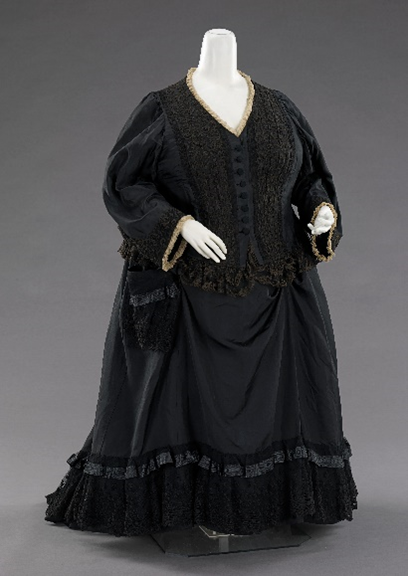
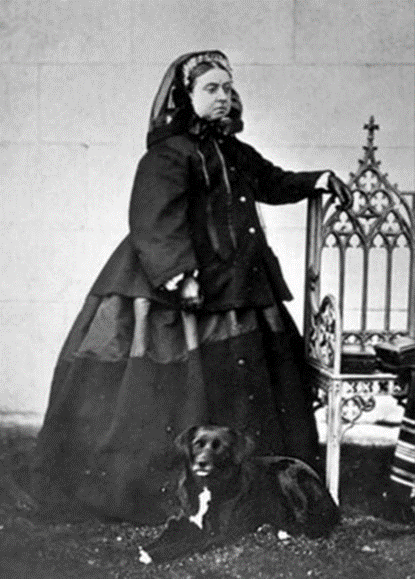
The pictures below are examples of a mourning dress we have in the Hagen History Center Erie County Historical Society’s collection. It is a two-piece dress from a Curtze family member worn in the 1880s-1900s. This dress is currently on display in the Watson-Curtze mansion on the second floor in the “Celebrating the Curtze Legacy” exhibit.
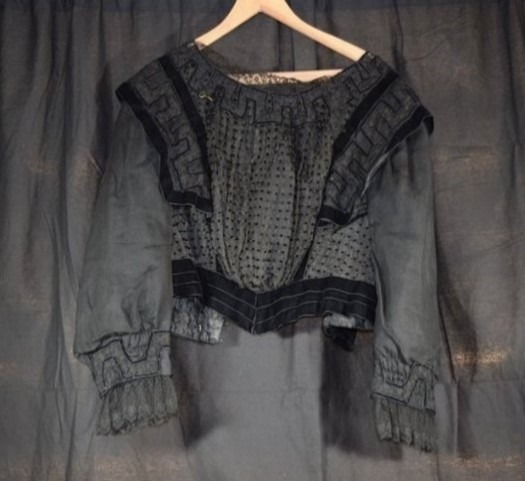
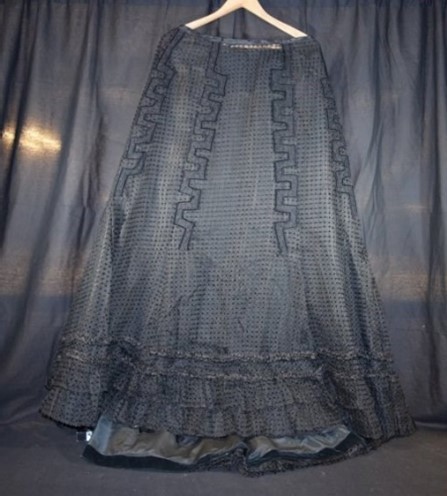
Widows would eventually become expected to wear mourning dresses for at least two-and-a- half years after their husband’s passing. As for widowers, they only had to wear mourning clothes for three months.
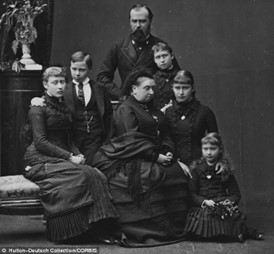
Women not only were expected to wear mourning dresses, but other accessories, too. This included capes, fans, gloves, veils, and bonnets. All basic accessories a woman would have worn even when not in mourning. Jewelry such as necklaces, bracelets, rings, brooches, and lockets were also important. Most jewelry, as the Victorian era came about, was made of hair from the loved one that passed away. Today we may see it as strange, and even a bit creepy, but for the Victorian era it was a form of remembrance.
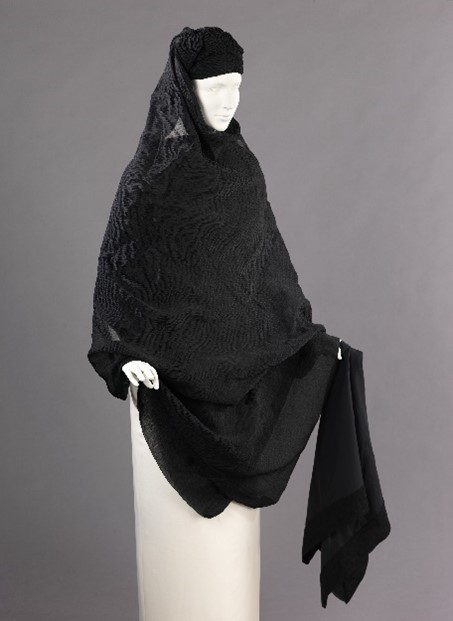
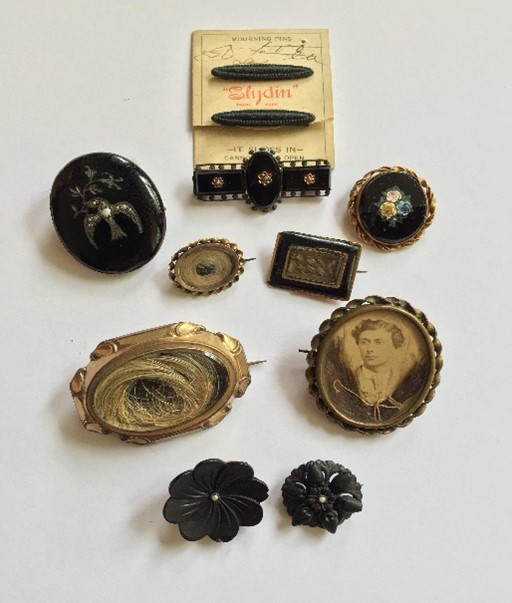
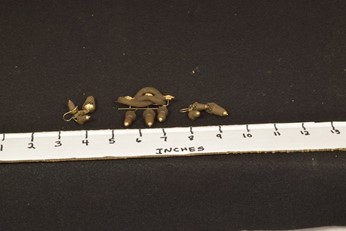
Today, people really only wear black to a wake or funeral. After the person has been laid to rest, we tend to go back to our everyday clothes. Many people today do keep a person’s ashes which can be seen as another version of Victorians keeping a person’s hair. The most common practice today is to keep the loved one’s belongings and pictures taken of them. We went from a very public way of mourning to a simpler, more private way to mourn.
